|
|
|
|
| Chess960 castling isn't as complicated as some players think. In practice, castling is fairly straightforward and follows the castling rules of traditional chess. The following pair of diagrams shows the fundamentals of castling in traditional chess. The pieces that are not involved in castling have been removed in order to focus on the pieces essential to castling: the King and the Rooks.
The diagram on the left shows the traditional setup of the Kings and Rooks before castling: King on the e-file, Rooks in the corner. The diagram on the right shows the board after both players have castled: White has castled 'Kingside' (O-O) and Black has castled 'Queenside' (...O-O-O).
The castling move in traditional chess is often explained as 'the King moves two squares toward the Rook and the Rook hops over the King.'
|
| R***K**R |
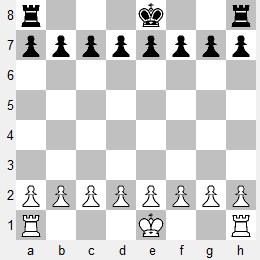 |
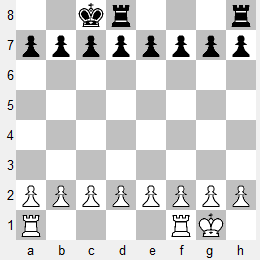 |
| |
Before Castling |
After Castling
(White: O-O; Black: ...O-O-O) |
| The next diagram (on the left) shows a chess960 position where the King has started on the d-file instead of the e-file. It could represent the start position from traditional chess where the King and Queen have switched squares on the center files. Other than that, none of the pieces have moved from their initial start squares.
The diagram on the right again shows the position after White has castled 'Kingside' (O-O) and Black has castled 'Queenside' (...O-O-O). It is exactly the same as the preceding diagram for traditional chess!
The castling move in chess960 can be explained as 'the pieces end up on the same squares as they do in traditional chess'.
|
| R**K***R |
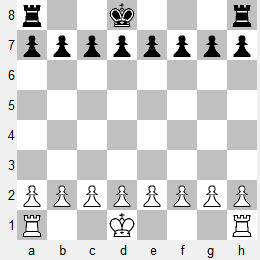 |
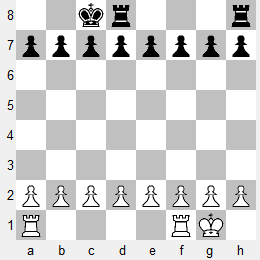 |
| In the rules of chess960, there is no requirement that the King starts in the center. The only requirement is that it start somewhere between the two Rooks. The following diagram shows the King starting on the g-file.
Even if the King had started on another file, the b-file for example, the diagram on the right would look the same. It is, in fact, the same as the two preceding 'after castling' diagrams. |
| R*****KR |
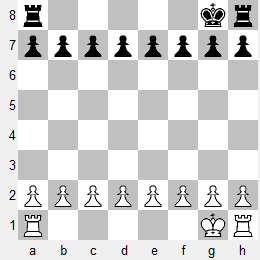 |
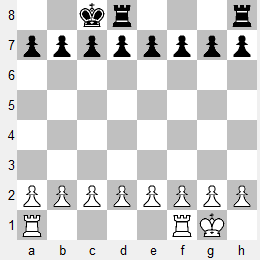 |
| In the rules of chess960, there is no requirement that the Rooks start in the corner. The only requirement is that they start to the left and to the right of the King. In the following position, the Rook starting on the f-file participates in castling O-O, although it does not actually move anywhere.
|
| *R*K*R** |
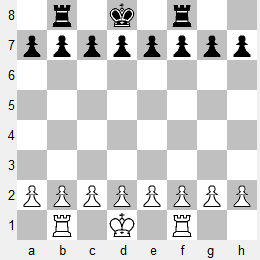 |
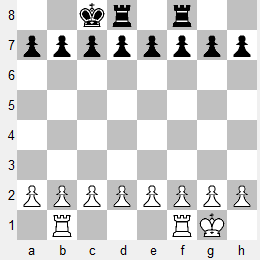 |
| An unusual aspect of chess960 is that castling is sometimes legal already on the first move of the game. This happens when the King and Rook are initially positioned on their target files, but with the King on the Rook's square and the Rook on the King's square. There are no pieces between the King and the Rook to be moved out of the way.
The following diagram, with the King on the f-file and the Rook on the g-file, shows an example where castling O-O is possible on the first move. Castling O-O-O follows the normal procedure.
|
| R****KR* |
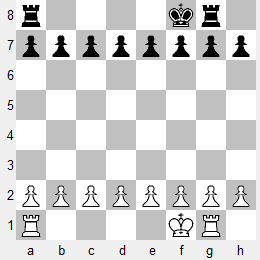 |
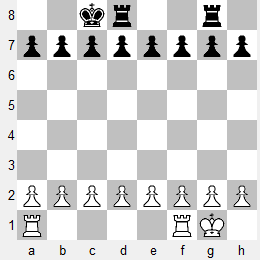 |
| The following diagram, with the King on the d-file and the Rook on the c-file, shows an example where castling O-O-O is possible on the first move. Castling O-O follows the normal procedure.
|
| **RK**R* |
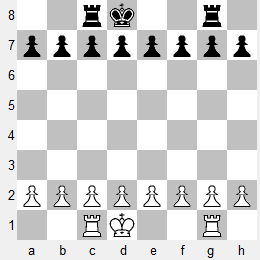 |
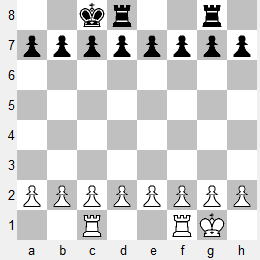 |
| In all of the positions above, we've been able to castle because the other pieces -- Queen, Bishops, and Knights -- were removed from the board. This satisfies the requirement that
1) there be no pieces between the King and the castling Rook, and
2) there be no pieces on the target squares of the King and castling Rook.
Sometimes it's the other Rook that interferes with castling, because it sits on a target square.
In the following diagram the castling pieces are bunched on the right side of the board. While castling O-O-O presents no particular problem, the Rook on the f-file interferes with castling O-O. That Rook could get out of the way by moving to any square to its left, but it it can also move out of the way on the f-file, as shown in the diagram on the right.
|
| *****RKR |
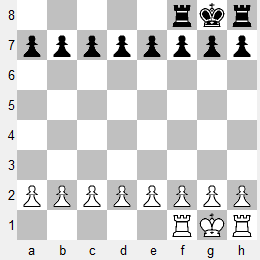 |
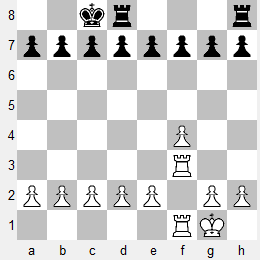 |
| In the following diagram the castling pieces are bunched on the left side of the board. Here castling O-O presents no particular problem, while the Rook on the c-file interferes with castling O-O-O. That Rook could get out of the way by moving to any square to the right of the d-file, but it it can also move out of the way on the c-file, again shown in the diagram on the right. |
| RKR***** |
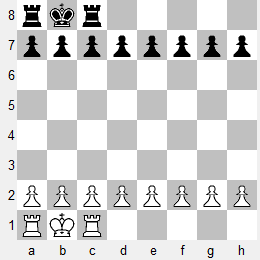 |
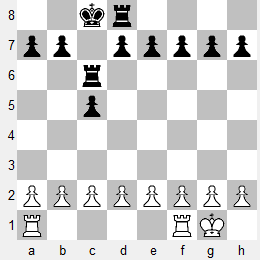 |
| Here we've looked at eight different castling patterns. How many different castling patterns are there in total? It turns out that there are 56 different patterns. If you're good at calculating in your head, you might realize that 960 is not evenly divisible by 56. This means that some castling patterns represent more chess960 start positions -- when all of the pieces are on the board -- than do other patterns. The reason for this is explained in a related blog post,
Castling Patterns Visualized.
|
|

